Introduction
Traditional dancing practices are a fundamental element of any culture. Traditional or “folk dance, generally, a type of dance that is a vernacular, usually recreational, expression of a past or present culture” (Kealiinohomoku). Traditional dances serve as a religious practice, social ritual, and a means of telling myths and national epics. Traditional dances have both similarities and differences. They are such parameters as the complexity of movements and their number, rhythm, costumes, music, and historical genesis. Such traditional dance practices as the Irish step (see Fig. 1) and Thailand Khon Masked Dance Drama (see Fig. 2) have polar historical origins. Irish step is a phenomenon of an inclusive peasant and villager social class, while Khon is a dance practice of an exclusive high aristocracy environment. This work aims to prove that the nature of the social environment’s structure, namely inclusiveness or exclusivity, are key influencers of various aspects of traditional dances.
History, Cultural Context, and Inclusive Nature of Irish Step
The first mentions of the Irish step as a systematic dance practice can be found in the historical sources of the mid and late-eighteenth centuries. According to Carr, “one of the most frequently cited historical references is the travelogue of Arthur Young, an English writer who toured the Irish countryside in 1776” (29). The traveling dance masters (see Fig. 3) traveled through the villages and taught the local peasants how to step dances. The French ballroom set of quadrilles (see Fig. 4) influenced the Irish step. The traveling dance masters have brought the set principle to the Irish step so it could be performed not only by a solo person but also by a group of dancers (Carr 30). Several Irish step features have their roots in societal conditions. These are work boots and wooden floors (Carr 32). Many Irish people were labor workers living in mostly wooden houses. During the dance performance, a knocking sound was produced, which the traveling dance masters figured out to use. They adapted the Irish step so that the knocking sound accelerates the rhythm and movement and accompanies the traditionally fast country music. The cultural context of the Irish step is important. According to Foley, “step dancing is a solo music-dance practice…” (3). Nowadays, dance specialists distinguish between traditional and modern Irish steps. The first one is “… only the legs and feet move in flat down technique,” and the latter one is “…full-body movement with ballet up technique” (“Irish Dance”). Male dancers wear solid color trousers and a shirt. Female dancers wear colorful short dresses with covered hands (see Fig. 5). Dancers’ shoes may vary and depend on the characteristics of the particular dance. Irish step is one of the most recognizable and famous traditional step dance practices. This dance is widespread in English-speaking countries as well as in Russia and Japan. It is due primarily to the Irish emigration caused by the Great Potato Famine when the Irish migrated to other countries of the Anglosphere. The globalization process and mass media also popularized this dance genre in the twentieth century.
History, Cultural Context, and Exclusive Nature of Thailand Khon Masked Dance Drama
Thailand Khon Masked Dance-Drama has a long history of development. Researchers find mentions of the first Khon performances in the surviving sources from the Ayutthaya period, the beginning of the fourteenth century (Suntiatchawan and Limschoon 50). For a long time, only male actors could participate in the show. In 1935, the Thai government decided to introduce the principle of inclusiveness into traditional cultural practice and allow women to play specific roles (Suntiatchawan and Limschoon 52). Nevertheless, the strict division between protagonists and antagonists in the roles persists. Khon Masked Dance-Drama is a traditional, centuries-old theatrical genre in Thailand. This cultural practice is more than a dance form. Khon Masked Dance Drama includes strictly established instrumental, vocal, costume, and ritual elements (“Khon, the masked dance-drama of the Ramakien, Thailand Part 1”). Each Khon Masked Dance Drama performance tells stories from Buddhist mythology. For a long time, only members of the royal family and the nobility who had been trained in theatrical skills since childhood could become Khon Masked Dance Drama actors. Today, professional actors can also be the actors of Khon performance (see Fig. 6). The movements, costumes, sets, lyrics, and arrangements are still strictly traditional (Watcharaphong et al. 8). Modern theater technologies and trends are only used to make the actors more effective and safe.
Reasoning
Discussed cultural practices have a different historical genesis and social environment. The comparison of these two cultural practices shows the correlation and causation between their original social spheres and the current state of the two dance traditions. Irish step is an internationally renowned type of dance that almost anyone can learn; the music may vary as well as the costumes. This dance practice extends far beyond conventional Irish and even Western culture. It means that cultural practices originating from the social environment with an inclusive structure tend to be inclusive and actively and easily transferred to other cultural groups. Khon Masked Dance Drama remains a complex theatrical performance that preserves most cultural and narrative traditions. The most dramatic cultural changes took place only in the twentieth century. Khon Masked Dance Drama remains a conservative Thai art form that is unparalleled in other cultures. It can be explained by the fact that in Asian dance, there is a concept of high and low art, where Khon Masked Dance Drama refers to the first (Watcharaphong et al. 3). It is because this cultural practice was formed in an aristocratic environment. Therefore, an exclusive social environment makes traditional dances exclusive and hard to be transferred into other cultures.
Conclusion
This study investigates how historical and social genesis forms traditional cultural practices such as the Irish step and Thailand Khon Masked Dance Drama. It was found that there are a correlation and causation between the nature of the structure of the social environment in which traditional dances were developed and their cultural properties.
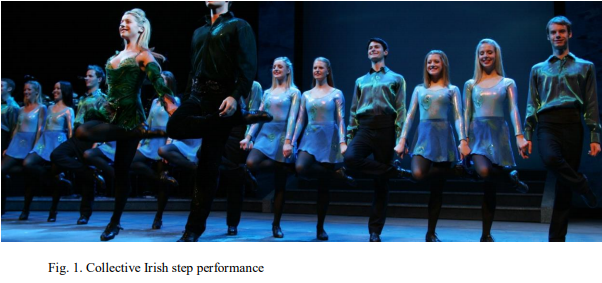
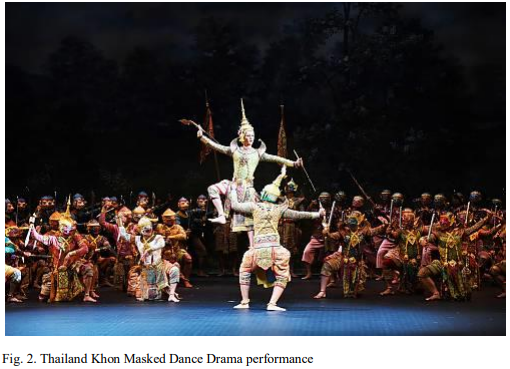
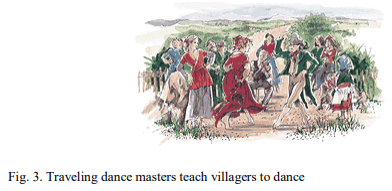
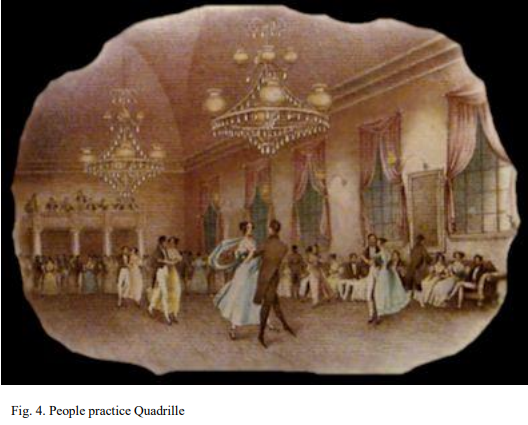
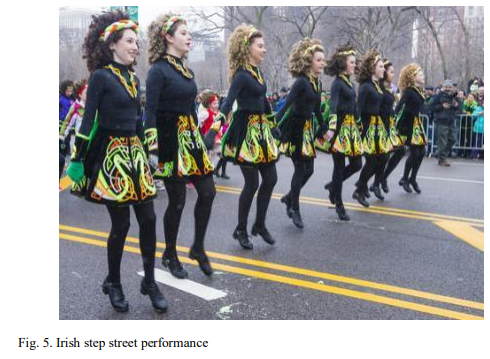

Works Cited
Carr, Darrah Eileen. On the heels of Riverdance: Choreographic process in contemporary Irish step dance. 2017. Texas Woman’s University, Ph.D. dissertation.
Foley, Catherine E. Step Dancing in Ireland: Culture and History. Routledge, 2016.
“Irish Dance.” DanceUs.org, n.d., 2020. Web.
Kealiinohomoku, Joann W. “Folk dance.” Encyclopædia Britannica, 2020. Web.
“Khon, the masked dance-drama of the Ramakien, Thailand Part 1.” YouTube, uploaded by WildFilmsIndia 2018, Web.
Suntiatchawan, Phatcharin, and Phusadee Limschoon. “History of the Female Characters in the Khon Masked Drama.” Rangsit Music Journal, vol. 12, no. 1, 2017, pp. 49-67, so06.Web.
Watcharaphong, Soongpankhao, et al. Thai Classical Dance. RMUTP, 2017.